- The Bosawás Biosphere Reserve is the third largest forest reserve in the world and is home to indigenous people and 21 ecosystem types, which host high levels of biodiversity.
- Nicaragua’s booming livestock industry is causing a migration of ranchers to the reserve where they often pay land traffickers to illegally secure title to land.
- From 1987 to 2010, more than 564,000 hectares of the reserve were cleared and replaced with ranch lands and farms. 92,000 hectares have been cleared in the last 5 years.
BOSAWÁS BIOSPHERE RESERVE, Nicaragua – To get to Napoleón’s house requires traveling on a gravel road near Siuna on a mule. It is the last dwelling before penetrating the core zone of the Bosawás Biosphere Reserve in northeastern Nicaragua, the largest forest reserve in Central America and the third largest in the world. The intense rain does not stop Napoleón; with a machete he makes his way along a path that leads us to an even deeper darkness in the dense vegetation. After an hour of hiking, we reach the lane that indicates the beginning of the core zone of the Reserve.
Bosawás in Nicaragua, La Mosquitia in Nicaragua and Honduras, and the Sierra de Agalta National Park and Río Plátano Biosphere Reserve in Honduras, make up the most extensive binational protected area in Central America. Bosawás, with its 2,042,535 hectares, is an indispensable component of the Mesoamerican Biological Corridor. The corridor aims to allow the free movement of species and ensure the survival of biological diversity of Mesoamerican ecosystems, which includes Belize, Costa Rica, El Salvador, Guatemala, Honduras, Nicaragua, Panama, and Mexico.
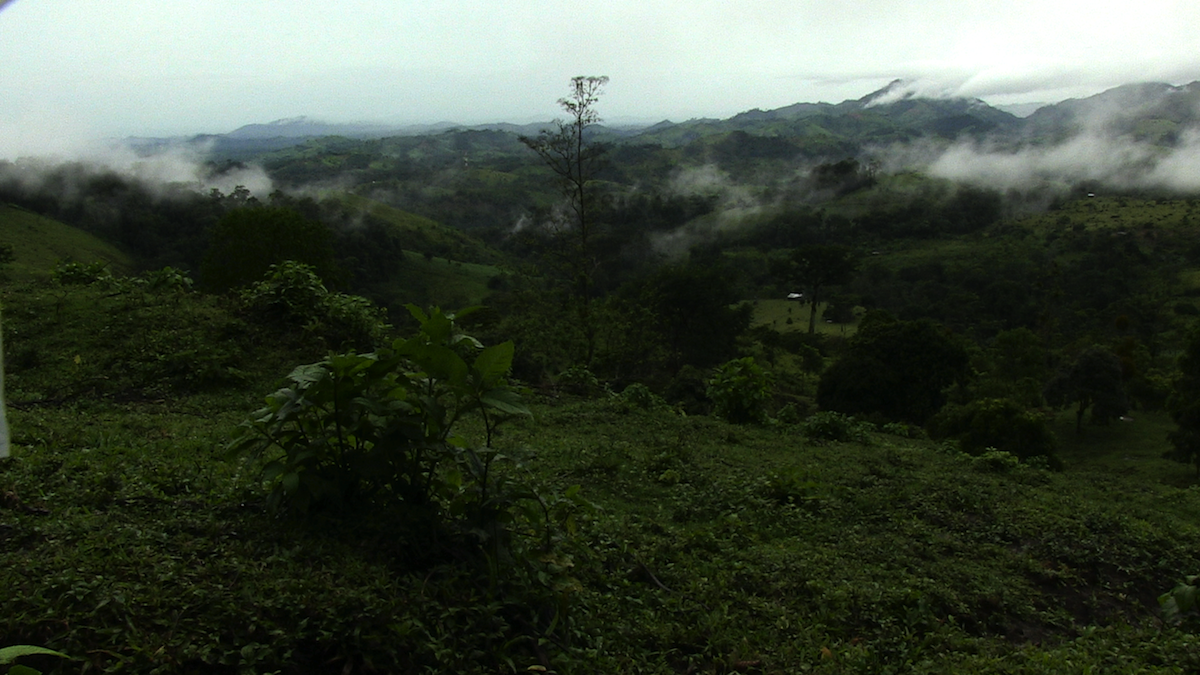
Bosawás has 21 ecosystems and six types of forest where 370 species of plants including trees and shrubs, 215 birds, 85 mammals, 15 venomous snakes, 11 fish and 200,000 insects have been identified. Bosawás thus represents a great wealth, partly unexplored, for scientific research. It is also the cradle of important watersheds that give rise to the country’s main rivers and cultural conservation áreas, such as the ones of the Miskita and Mayagna indigenous peoples.
However, out of the 1,604,683 hectares of broadleaf forest the reserve had in 1987, only 1,039,945 were left in 2010; that is, more than 564,000 hectares were cleared and replaced with grasslands and cultivated areas, according to data from the reserve’s management plan. This means that in 23 years a third of the Bosawás forest was lost. And in the last five years, another 92,000 hectares were cleared for the production of basic grains and livestock, according to the Humboldt Environmental Center. The deforestation is driven by an intense internal migration of people from the Pacific coast and the central area of the country looking for fertile land and space.
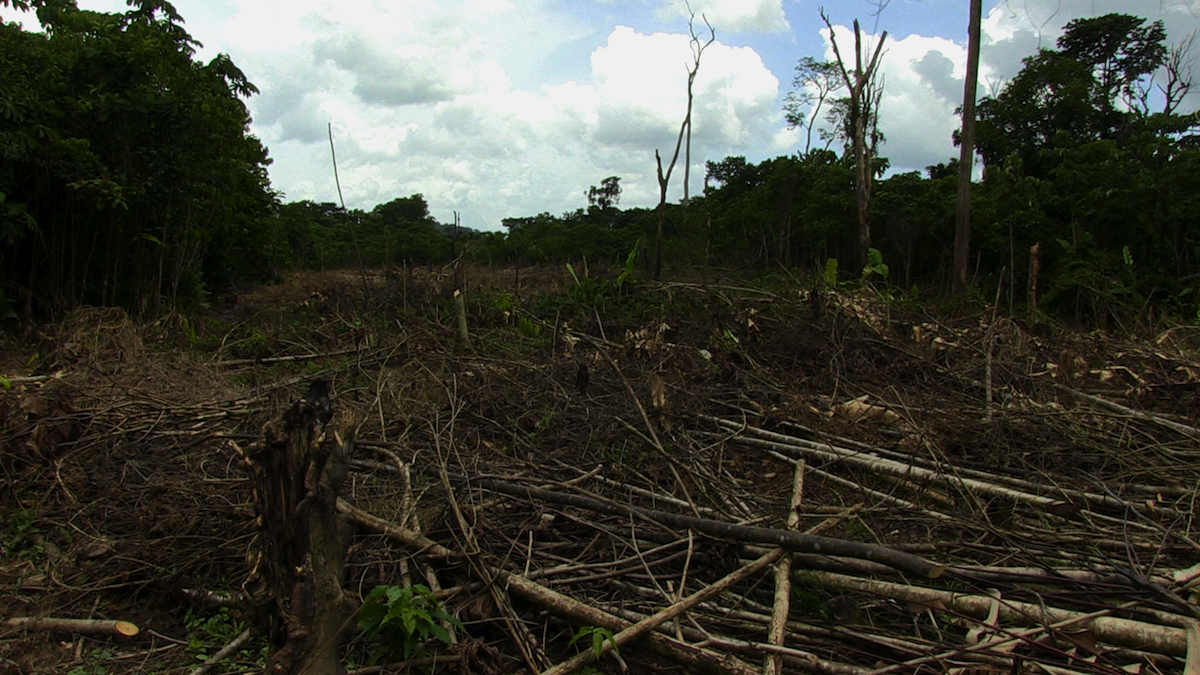
“This [photo above] was formerly a forest,” said Napoleón’s wife Ana while cooking some corn tortillas. In the 14 years living in the Bosawás Biosphere Reserve, she has seen the buffer zone—intended to act as a containment area against impacts on the core zone—converted into rice, beans and maize fields, and pastures for cattle grazing. In fact, according to the Nicaraguan Socio-Environmental Crisis: Post-2016 Drought Report carried out by the Humboldt Environmental Center “the total loss of forests corresponds to new areas destined for grassland and agriculture.” The buffer zone is the most affected, with 82.8 percent of the total forest clearance in the reserve, according to a report from the German Organisation for Technical Cooperation (GTZ).
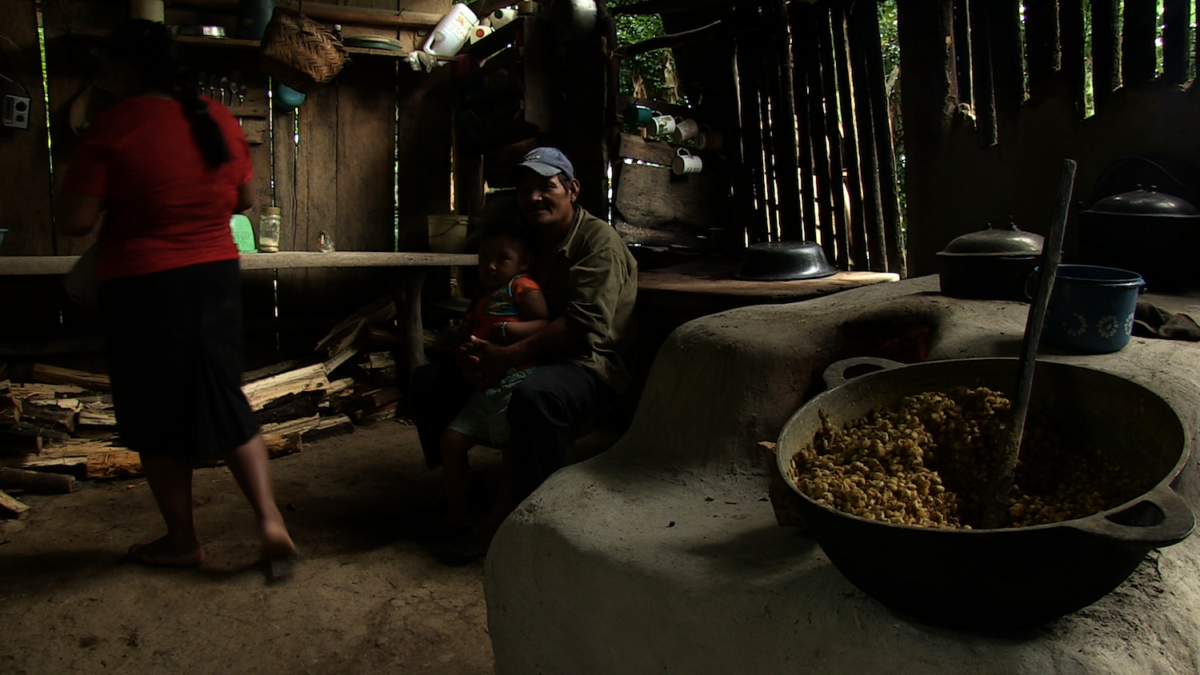
By definition, buffer zones—while allowing agricultural and livestock activities—should not jeopardize the integrity of the protected core area. However, at Bosawás, one can find grain crops in every single hectare, and maize fields reach the very edge of the border between the two areas. In Bosawás, three sectors are particularly protected within the buffer zone, but this has not prevented them from being affected by the loss of forest area; they have become isolated, putting at risk the connectivity of the Mesoamerican Biological Corridor.
In 1997, when UNESCO declared Bosawás as a biosphere reserve, it represented only part of a large forest area, much larger than the reserve itself. In the maps, it is possible to clearly see that since 1983 the forest, inside and outside Bosawás, disappeared in a rampant way (see map 1). It is also possible to observe with the naked eye the devastating advance of deforestation from the south to the interior of the core area of the Reserve, the heart of Bosawás (see map 2).
Production and migration
When Arsenio Arauca arrived at these lands, there was only forest and no cattle present. People who are originally from Río Blanco, a department of Matagalpa in the center of the country, “…emigrated to this place because here there was a better life expectancy. There is more favorable and cheaper land; instead, where we used to live it was more expensive and smaller.” Arsenio sold his farm in Río Blanco for $1,500 a block (0.7 hectares) to a larger cattle producer and bought, through the black land market, a farm at $400 a block adjacent to the Bosawás Biosphere Reserve, in the municipality of Waspam.
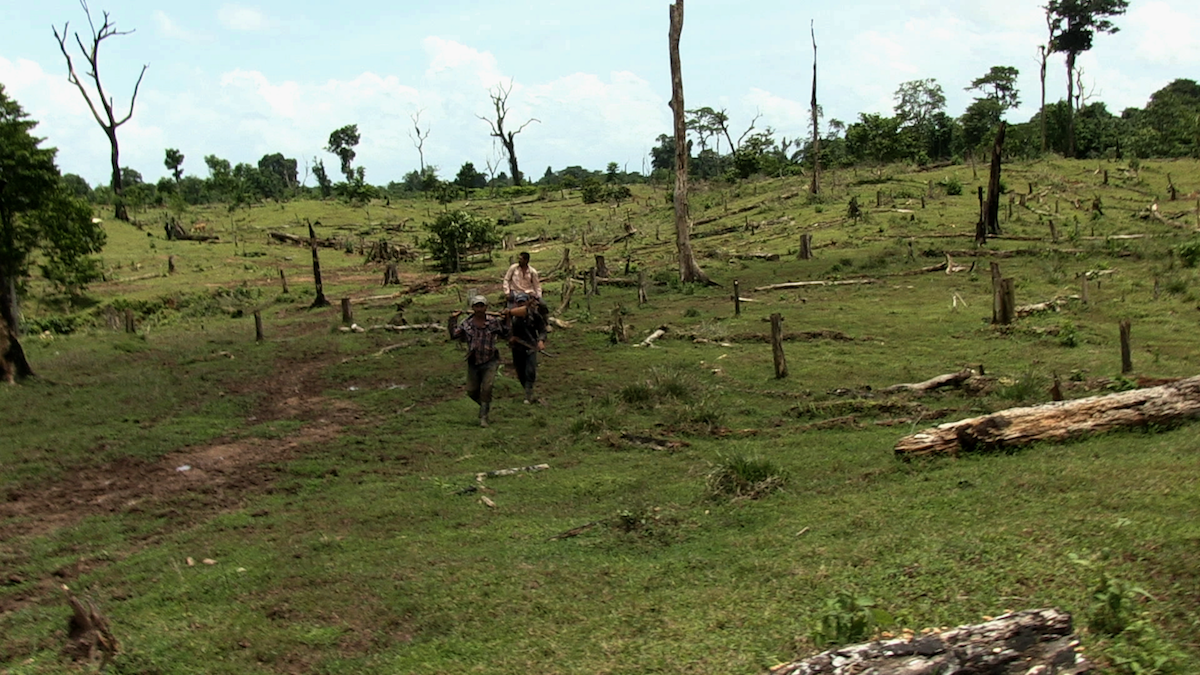
Like Arsenio, there are thousands of farmers and herders from the Pacific coast and the center of the country who have moved east to the Atlantic area of Nicaragua after selling their properties to large livestock or monoculture producers. According to Lottie Cunningham, president of the Center for Justice and Human Rights of the Atlantic Coast of Nicaragua (CEJUDHCAN), there were 44 mestizo families who lived in Mayagna Awas Tingni territory, on the outskirts of the reserve, in 2005; by 2010 the number increased to 475, and 800 in 2014. Alejandro Peralta Bans, an indigenous representative of the Mayagna Sauni Arungka territory, located in the Bosawás Biosphere Reserve, estimates that of the 70 or 80 settler families living in that area of the reserve in 2000, they increased to 800; the families have cleared 40 percent of the forest in that territory. Likewise, according to the GTZ report, “Of the 314 families of settlers who were located in the Mayagna Sauni Bas territories within the reserve, 80 percent of them by 2010 had already sold their properties, probably advancing towards a new pioneer front.”
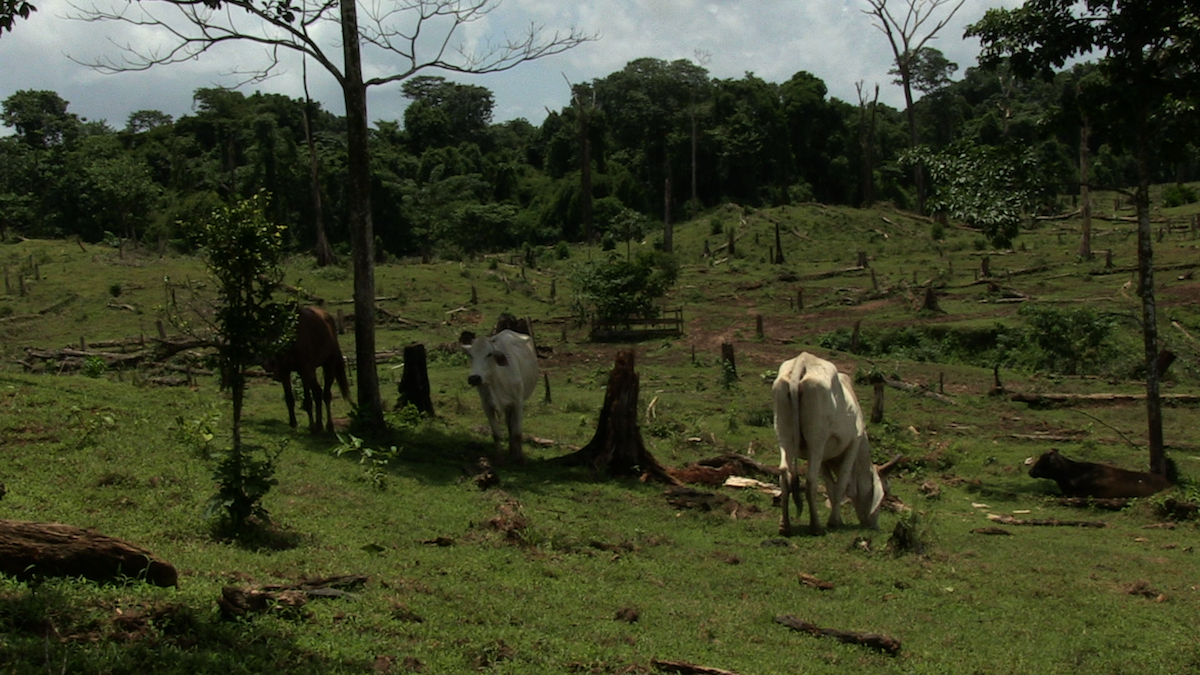
According to Arsenio Arauca and other producers, the low prices in the northeastern territories of Nicaragua, due mainly to the almost entirely absent road infrastructure, constitute a sufficient reason to emigrate. So, they see in Bosawás and its surroundings the opportunity to solve their production problems and, thus, a way to generate more income and improve their quality of life.
In the last six years, Nicaragua has progressively increased its exports of agricultural products in response to the increase in global food demand. According to data from the Center for Exports in Nicaragua (CETREX), beef exports have increased significantly, from 84,721 tons in 2010 to 95,066 tons in 2016. Cattle is today, after coffee, the exported product that generates the most income for the country, and is the fastest growing domestic production sector. At the same time, “Adding the data on exports of dairy, meat and all things that come out of animal production, we can say that, in economic terms, livestock is more important than coffee,” said Selmira Flores, director of the research program of the Nitlapan-UCA Research and Development Institute (Nicaragua).
The position of cattle production in the trade balance has been reflected in the loans that this sector has received from financial institutions, although in a specific concentration of beneficiaries. According to data from the Association of Microfinance Institutions of Nicaragua (ASOMIF) in 2013, financing for livestock represented $24.37 million and was distributed among 14,791 producers. However, in 2014, the amount of credit for livestock amounted to $26.88 million but financed only 13,604 producers. “The financiers try to be cautious in the placement of credits to try and have greater security on the return of credit,” said Selmira Flores. “The result is that there is more credit for a smaller segment of livestock producers (…) who have the ability to handle larger herds.”
A study carried out by the Central American University of Nicaragua, the University of Antwerp (Belgium), and the Belgian Fund for Scientific Research (FWO) asked “Is it possible to finance livestock on the agricultural frontier of Nicaragua in a sustainable way?” Since those credits are not intended to finance land purchases, the accumulation of profits allows producers to finally expand their farms or buy others. This growing concentration of land ownership in the west of the country is directly related to the migration process of small producers such as Arsenio Arauca. People are attracted to the low land prices in the eastern part of the territory, and they are driven by the increasing concentration of land in the west. “Less favored peasant populations have had to find ways of surviving with the remaining resources, putting the ecological stability of the country at risk,” explained Víctor Campos, director of the Humboldt Environmental Center. This is confirmed by a settler who recently moved to the reserve: “Nothing is harvested in the Pacific. There is no space to work. Rich people own the biggest properties. We can’t have anything for our children, so we are looking for a better future for them.”
When the peasants arrive at these forested territories, they clear the untouched forest, then slash the low vegetation and burn and sow with basic grains —such as beans, rice, and corn. “These lands, in the early years, have enough organic matter, but when unprotected, the running water caused by heavy rainfall impoverishes the soil quickly. Farmers are looking for other areas where they can grow their grains —a process known as shifting agriculture— and this space is left for extensive livestock farming,” Héctor López, a forestry engineer, told Mongabay-Latam.

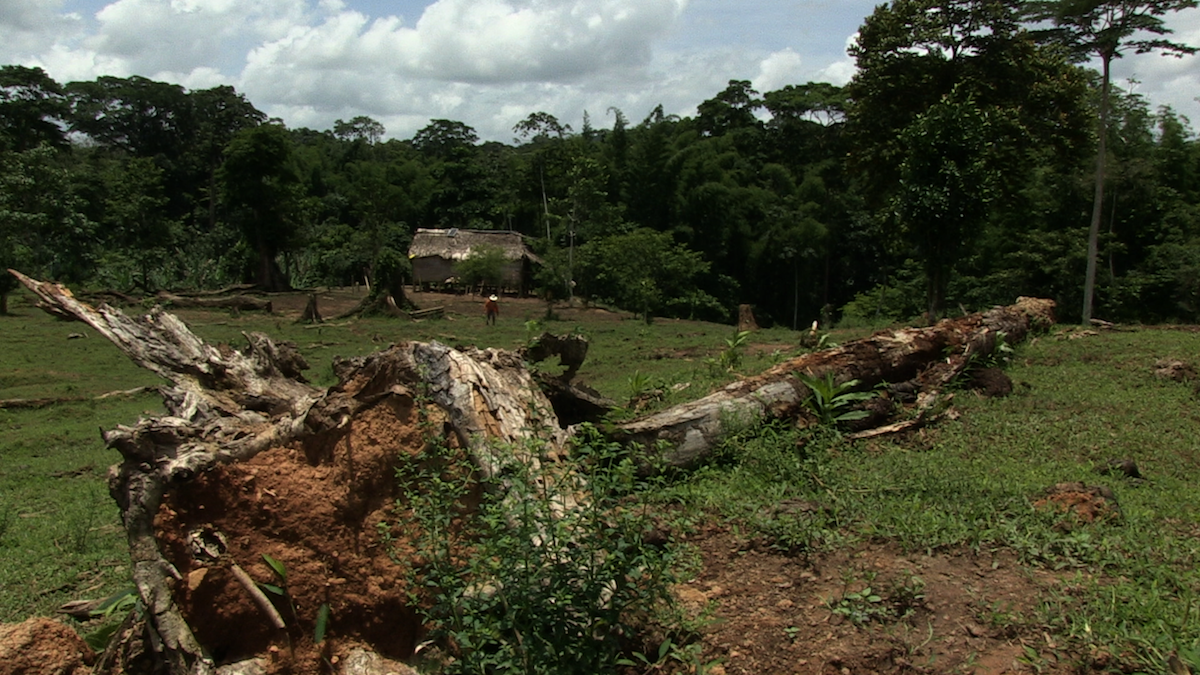
The convenience of expansion
We sail seven hours along the Waspuk River, into the core area of the Bosawás Biosphere Reserve, until we arrive at the artisanal Santa Rosa Murubila gold mine, located on the border between the core and buffer zones. From there, six hours on a mule to the east; the sun glides steadily over the prairies that are almost out of sight, among- half-burned logs, a vestige of the forest that had been devastated not long ago. A few cows graze and are not disturbed by the sound of the chainsaw heard in the distance.
Nicolás —for safety reasons we do not disclose his last name—is the leader of the community of San Luis de la Esperanza, where more than 600 people live, completely isolated, all from the west. Nicolás owns four blocks of cassava, rice, malanga, and corn plantations. In the rest of his property, the cattle move quietly among the abundant pasture, although he doesn’t own any of these animals. “Those who have more cattle, those who are ‘billetuditos’ (a colloquial Spanish word for ‘wealthy’), get us poor quality livestock. We are given small calves…Once the cow is fully grown and has given birth, I keep the small cattle and return the adult cows,” he told Mongabay-Latam.
In that way, large and small livestock farmers, through a system known as mediería, participate in an economy that significantly impacts the stability of the Bosawás Biosphere Reserve, as well as the Mesoamerican Biological Corridor, which they are part of.
The amount of livestock in the country has been increasing, going from 2.6 million head of cattle in 2001 to 4.1 million in 2014, according to the latest agricultural census (although according to cattle ranchers and the meat industry, the real number reached 5.8 million). According to this indicator, in 13 years, the geographical space for agricultural production would have doubled; in the prairie of Nicaragua, there is on average one head of cattle per hectare. This situation is “totally inefficient from the point of view of livestock production,” said Víctor Campos. This is because “the animal gets tired looking for its food all over that open territory, and in the end does not produce even half of the milk and meat it should produce,” explained Héctor López.
This deficiency in productivity is compensated by Nicaraguan farmers with land extensions; instead of increasing profitability per animal, more grazing areas are created to introduce more animals. For now, this is still possible because “climatic conditions in the Atlantic area of the country allow water and forage security, which are the resources necessary to maintain low-cost production,” explained Víctor Campos. Thus, while in El Salvador producing one liter of milk costs $0.68, in Nicaragua that liter costs $0.35, not including environmental costs.
To carry out intensive livestock production that results in greater productivity, better use of space and therefore a reduction of logging for the preparation of pastures, requires investment in research, labor and especially in infrastructure. However, until now, there is no policy that seeks to improve the effectiveness of space usage.
The lack of governance
Bosawás bears the title of protected area for being a Biosphere Reserve according to a UNESCO decree but also for being located in the North Atlantic Autonomous Region, which forms part of the territories ceded to the indigenous communities of the Caribbean at the end of the 1980s. By law, these lands cannot be sold, bought or exchanged. But illegal land transactions are carried out continuously and without difficulty in the capitals of each municipality, where there are many notaries and law offices that carry out the procedures, as confirmed by Mongabay-Latam during its reporting in the area.
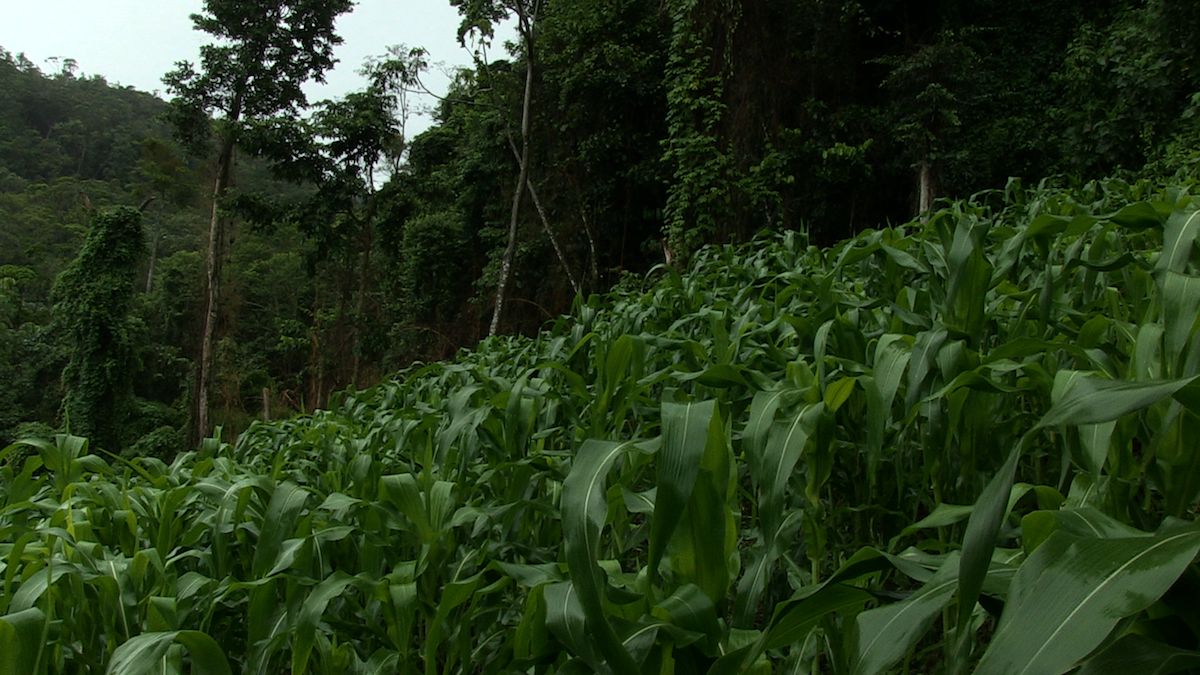
In the Cerro Banacruz hill area, one of the three protected areas within the buffer zone of Bosawás, Pablo, a land trafficker—whose name we have changed at his request—walks up the hill to take us to the logging area. “We cut the trees from these blocks and then timber traffickers pay 12 córdobas ($0.40) for 30 cm (per foot). We make the contracts, cut the wood, put it in trucks that then go to the sawmills where furniture is made: tables, beds and chairs. Then we plant the grass, sell the property at a high value and look for a larger one.” Only the red wood of species such as cedro macho, royal cedar, guapinol or medlar are sold. The white wood, which is in less demand, is burned.
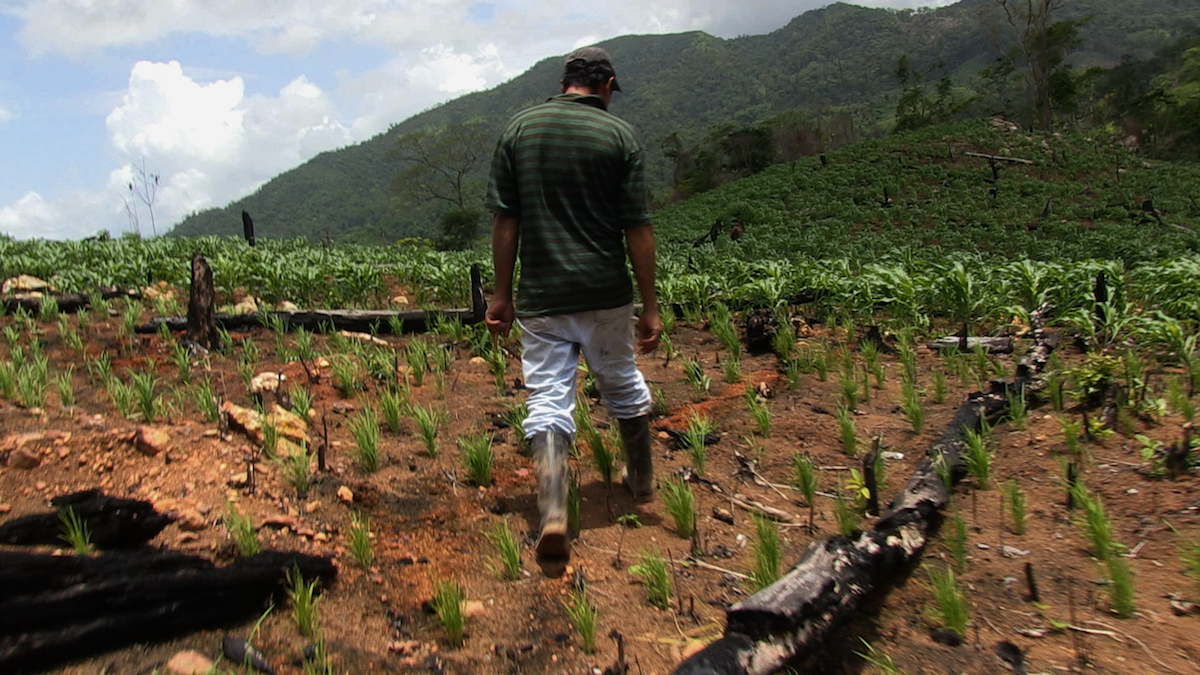
However, Pablo’s main business is not wood: he sells farms to livestock producers with the added value of delivering it ‘clean,’ that is to say, already cleared. That way, he can sell the land at a higher value to buy a bigger property. “If we sell this property to someone, the first thing they check is the pasture and whether the land is cleared or not (so they can bring their cattle); we then move to another place. If you come to this farm and you like it, we negotiate a price and we’ll sell it you without hesitation. Then we go to Rosita, (the capital of one of the municipalities that borders Bosawás) do the paperwork, and the farm is yours. We then take the money to another place.”
“This is a complex phenomenon since there are land traffickers (and) lawyers who are involved,” pointed out Manuel Ortega, sociologist and president of the Nicaraguan Academy of Sciences, who was in the 1980s a presidential advisor and later Governor of the current South Atlantic Autonomous Region.
Land goes from producer to producer through illegal transactions. Others are simply occupied without any financial agreement or are ‘sold’ by the indigenous authorities for an average amount of $860 a block (0.7 hectares), according to what some of the mestizos who have acquired land told Mongabay-Latam. “All the mestizos that are in these places have bought lands from the Miskitos and the Mayagnas, who continue selling land. If you ask them to sell you five blocks, 50 blocks, 200 blocks, they will still sell it to you,” said Arsenio Arauca. This is repeated in the areas bordering the Bosawás Biosphere Reserve — as in the case of Arsenio — and within the reserve itself. “There are corrupt leaders who sell indigenous land,” confirmed Lamberto Chau, an indigenous communal judge in the Waspam municipality. This has, in turn, caused the displacement of the indigenous communities towards the northern border of the country, and also an armed conflict between indigenous people and mestizos.
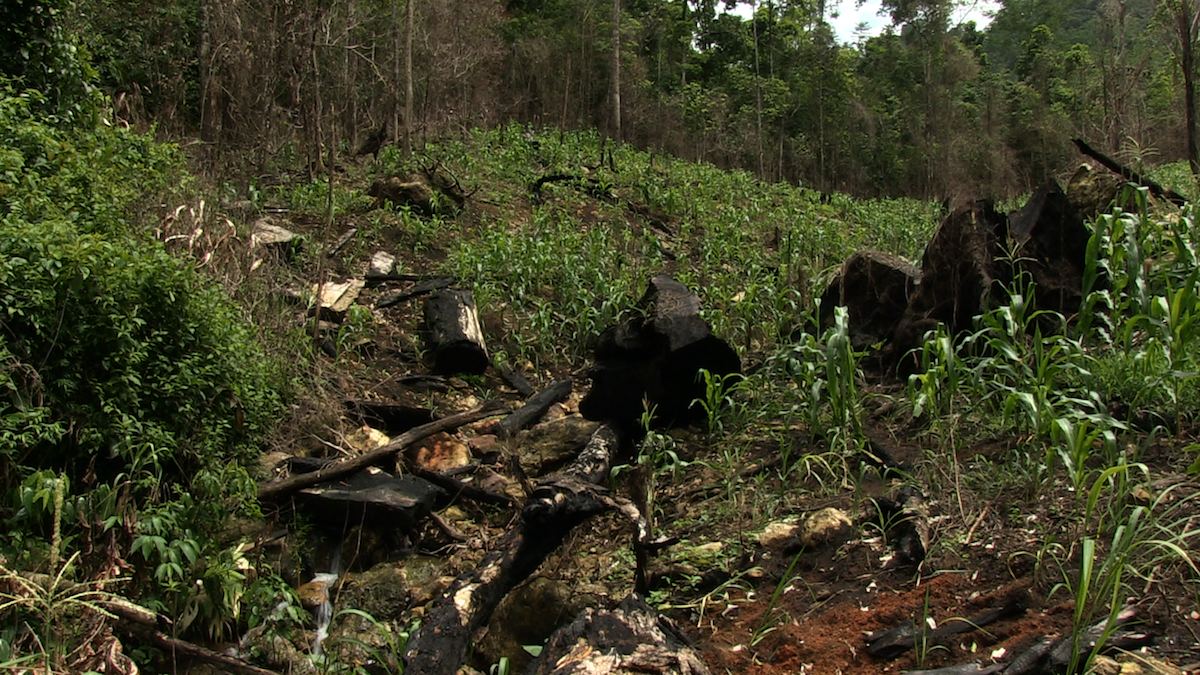
Manuel Ortega explained that “the process of land sale and illegal legalization of indigenous territories has to do with a very strong process of corruption that has been found in some spheres of local government, government parties — in both liberal parties and the Sandinista government — and in indigenous organizations. What has been proven is that there is strong corruption involving local governments, local lawyers legalizing property titles illegally, political parties offering territories in exchange for votes, or preventing their eviction in exchange for votes, which further complicates the problems.”
The illegal purchase and sale of land adds to the deficient record of the actual occupation of the land. For example, the 86 farms registered in the municipality of Siuna, one of the municipalities where Bosawás is located, would represent only 1.16 percent of the total number of farms estimated to exist in that municipality, according to the GTZ report.
Thus the lack of governance has led to the unplanned advance of intense economic production in the buffer zone and the south of the core of the Bosawás Biosphere Reserve, with profound environmental impacts, and in which many different actors are involved: farmers; land traffickers and facilitators of illegal transactions, including lawyers, political representatives and indigenous authorities; timber traffickers; and finally the large livestock producers.
The future of Bosawás
According to a FAO report, worldwide livestock prices are expected to increase in relation to crop prices because as “the population has higher incomes — especially in emerging economies — the demand for meat, fish and poultry will experience strong growth..” It is also expected that the increase in demand for food for a growing population with greater purchasing power will be covered mainly by increases in productivity.

For the time being, Nicaragua’s productive reality is not aligned with FAO’s aspirations, and all reports and allegations from organizations and scientific research centers alerting people about the alarming situation of Bosawás seem to be falling on deaf ears. The way of salvation for the reserve, say experts, is not in the hands of specific solutions for the protection of Bosawás, but in political wills aimed at a global transformation of agricultural production in Nicaragua.
Banner photo by Michelle Carrere for Mongabay
Note:
Global Forest Watch: Hansen, M. C., P. V. Potapov, R. Moore, M. Hancher, S. A. Turubanova, A. Tyukavina, D. Thau, S. V. Stehman, S. J. Goetz, T. R. Loveland, A. Kommareddy, A. Egorov, L. Chini, C. O. Justice, and J. R. G. Townshend. 2013. “High-Resolution Global Maps of 21st-Century Forest Cover Change.” Ciencia 342 (15 November): 850–53. Data available: http://earthenginepartners.appspot.com/science-2013-global-forest. Access by Global Forest Watch: www.globalforestwatch.org
This story was reported by Mongabay’s Latin America (Latam) team and was first published in Spanish on our Latam site on February 22, 2017.













